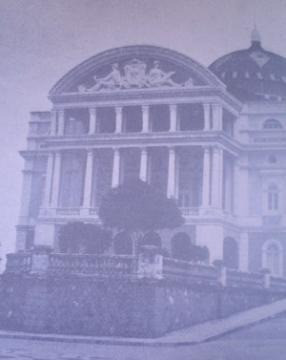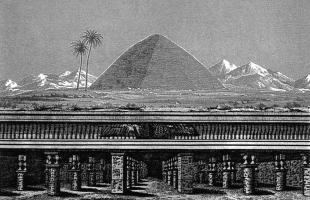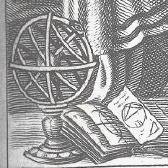History of Manaus


The first European to explore the area where the city of Manaus is today was Francisco de Orellana on his mythical trip in 1542. The area was inhabited by indigenous Manaus, Barés, Banibas and Passés, who lived in harmony with nature in an environment completely uncontaminated. The area was completely abandoned to its fate for almost a century, until the Portuguese Pedro de Teixeira explored it again, commanding an expedition heading to Quito.
In those years, the Portuguese, taking advantage of the ownership of the Crown of Spain and Portugal over the entire South American territory, slowly but steadily advanced westward, colonizing, in effect, a large part of the Amazon.
The main reasons for this incessant journey towards the west were the need to imprison indigenous people to later sell them as slaves on the coasts of Brazil and the attempt to free the Amazon River from the increasing incursions of the Dutch and French, who had successfully established themselves in the Atlantic coast (Saint Louis was founded by the French in 1612).
One of the first expeditions in the area where Manaus stands today was led by Captain Bento Miguel Parente, who left San Luis in 1657 commanding a small group of armed men and accompanied by the two religious Francisco Veloso and Manuel Pires.
In 1668, Captain Pedro da Costa Favela, upon returning from an expedition at the confluence between the Amazon River and the Negro River, informed the governor Antônio Albuquerque Coelho de Carvhalo about the need to build a fort at the meeting of the two rivers, precisely to monitor possible incursions by European enemies and to control the flow of indigenous people in the area.
Consequently, under orders from the governor, Captain Francisco de Mota Falcao traveled to the confluence of the two great waterways and, in 1669, erected a fort of stone and mud, calling it Fort of San José da Barra do Río Negro.
As the decades passed, the indigenous inhabitants of the area began to live in huts near the fort, which was restructured several times.
In 1695, the population of the village had grown considerably, so much so that the religious sent by the Portuguese Crown, Carmelites, Jesuits, Franciscans and Mercedarians, decided to build a chapel in the fort, which was given the name Capela de Nossa. Senhora da Conceição.
Meanwhile, not all the indigenous people passively accepted the orders of the Portuguese. The Manaus people strongly opposed the foreign presence in their ancestral land. Ajuricaba, his boss, tried to ally himself with the Dutch, but his attempt failed. They imprisoned him and sent him to Belem, in Pará, but he died under mysterious circumstances during river navigation, in 1727.
1750 was an important year for the kingdom of Portugal. In effect, it obtained definitive ownership of a large part of the Amazon basin, which until that date had been formally administered by Spain.
In 1755, the Portuguese, realizing the enormous importance of the central Amazon area and the confluence between the Río Negro and the Amazon River, founded the Captaincy of Sao José de Río Negro, whose headquarters was Barcelos, a town located approximately 400 meters away. kilometers from the Fort of San Jose da Barra do Rio Negro.
However, in 1791, Governor Manoel da Gama Lobo D'Almada transferred the headquarters of the Captaincy to the place that would later be called Manaus, thus giving great importance to the new town.
After several vicissitudes, the so-called Lugar da Barra (Manaus) obtained the definitive headquarters of the Captaincy of San José de Río Negro in 1807.
At that period, its population was a little more than 6,000 people.
What was life like in the so-called Lugar da Barra at the beginning of the 18th century?
At the top of the new society was the governor, subordinate, in turn, to the governor of the state of Grao Pará, which was based in Belem.
Then, there were the military, captains, lieutenants, private soldiers. Later, there was the important class of religious people, especially Mercedarians and Franciscans, who had the delicate task of evangelizing the natives. The surrounding lands, which were once property of the indigenous people, were divided among the military, whose descendants became landowners.
Increasingly important was the class of merchants, astute adventurers who quickly realized the enormous economic potential of the Amazon rainforest. They exported coffee, cocoa, cotton and tobacco.
Finally, the indigenous people, treated as serfs or even slaves, were required to work hard in the fields and with animals, often without any remuneration.
In 1822, Brazil proclaimed independence from the Portuguese Crown. The enormous Amazonian territory began to be divided into the two provinces of Amazonas and Pará. Meanwhile, the town called Lugar da Barra was growing considerably. In 1832, it became a “Villa”, that is, a city, and was baptized Cidade da Barra do Rio Negro and subsequently Nossa Senhora da Conceição da Barra do Rio Negro.
When, in 1850, the province of Amazonas was formed, its president João Batista de Figueiredo Tenreiro Aranha gave a further boost to the development of the city, founding the library and the first newspaper called Estrela do Amazonas.
Finally, in 1856, during the government of Herculano Ferreira Pena, the city was officially named Manaus, in honor of the indigenous people who inhabited it.
Meanwhile, the population of Manaus had reached 35,000 people, becoming a pole of attraction for the entire Amazon River basin.
Starting in 1879, they began to exploit rubber trees (hevea brasiliensis), because they realized that their value in the international market was growing considerably. The industrial revolution raised its price, since this material was used for the production of tires and other components, of which the Amazon had the exclusive world production.
It was Manaus' great opportunity: thousands of workers came to the city and entrepreneurs managed to earn enormous sums of money by selling rubber at high prices in international markets.
The city benefited from this financial flow, since aqueducts and sewers were built and a top-quality electrical network was installed. In 1890, the population was 52,000 people. In 1883, Professor Barbosa Rodríguez opened the botanical garden and had the merit of studying and cataloging numerous endemic plants of the Amazon.
Meanwhile, new events were changing the face of Brazil: in 1884, slavery was abolished and in 1889, the republic was proclaimed.
In 1896, the grandiose Teatro Amazonas was inaugurated, which was adorned with Carrara marble, French furniture and Murano glass. The first work represented was the Mona Lisa (by Amilcare Ponchielli), on January 7, 1897.
During those years the government palace, the municipal market and the customs house were also built.
At the beginning of the 20th century, Manaus had 73,000 inhabitants. Thanks to rubber exports, the average per capita income of Manaus was twice that of coffee-exporting cities such as Sao Paolo and Rio de Janeiro. The Amazon was responsible for 40% of the exports of all of Brazil.
The Amazon rubber monopoly was short-lived: some seeds from the tree were illegally transported to Malaysia and Indonesia, and some multinational companies managed to produce it at more favorable prices compared to those in the Amazon.
Within a few years, rubber production companies closed and many workers became unemployed. Some of them left the rural areas where they were hired, especially in the Madeira River, and gathered on the outskirts of Manaus, in search of a better standard of living. In 1920, Manaus reached 180,000 inhabitants.
The city's economy collapsed and the average income of its inhabitants reached minimum levels. Meanwhile, the population increased. During the Second World War, the city benefited from the so-called second rubber cycle, since the territories of Malaysia, where rubber was industrially produced until then, were occupied by the Japanese. But even these years of prosperity were short-lived.
In 1950, the population reached 279,000 inhabitants.
In 1967, the Manaus free zone was created, with the aim of stimulating industrialization and the creation of companies. It was a progressive success, because many commercial activities founded their facilities in the river city and the general revenue increased. In 1980, the city already had more than 900,000 inhabitants and investments did not stop.
Over the course of the following decades, Manaus became a cosmopolitan city. It attracted Arab, Japanese and Hebrew immigrants.
Today, Manaus is a large city, with a total population of 1,700,000 people. It is an industrial, commercial and tourist focus of great importance. Cruise ships disembark almost every day in its congested port, which is approximately 2,000 kilometers from the ocean.
In the city of Coari, located on the Amazon River (branch called Solimões by Brazilians), 375 kilometers from Manaus, a large national oil company extracts oil and natural gas, which are subsequently refined in the industrial zone of Manaus. In addition, a gas pipeline from Coari to Manaus is about to be built, which will increase the flow of natural gas, even available for export.
Construction is also beginning on a new bridge that will cross the Negro River and connect Manaus with Manacapuru. Regarding infrastructure, in addition to three airports and the aforementioned port, Manaus has two roads that connect it with Boa Vista, in Roraima, and with Porto Velho, in Rondônia, but to travel through the latter you must cross the Amazon River in ship.
Unfortunately, only a small part of the population of Manaus benefits from these changes, which are not always positive. Traveling by bus to Ponta Negra, the residential area of the city, where there is a beach on the banks of the Río Negro, you can see large favelas. On the other hand, many people are left without jobs and with a low level of civic education. The most important problems of the city are the pollution of the rivers that flow into the Río Negro, the insufficient availability of drinking water for poor neighborhoods and the dirt spread everywhere.
I believe that a civic awareness campaign aimed at all the inhabitants of Manaus, in addition to the implementation of a recycling service for the tons of urban waste produced every day, can serve to improve the appearance of such a wonderful city, with a great past. and a splendid future, on the condition that the entire urban area is not deliberately contaminated.
YURI LEVERATTO

























